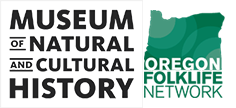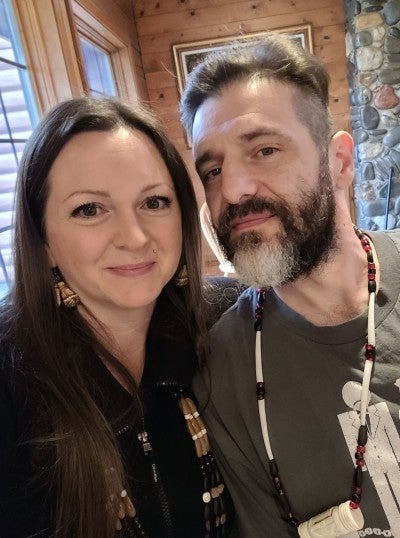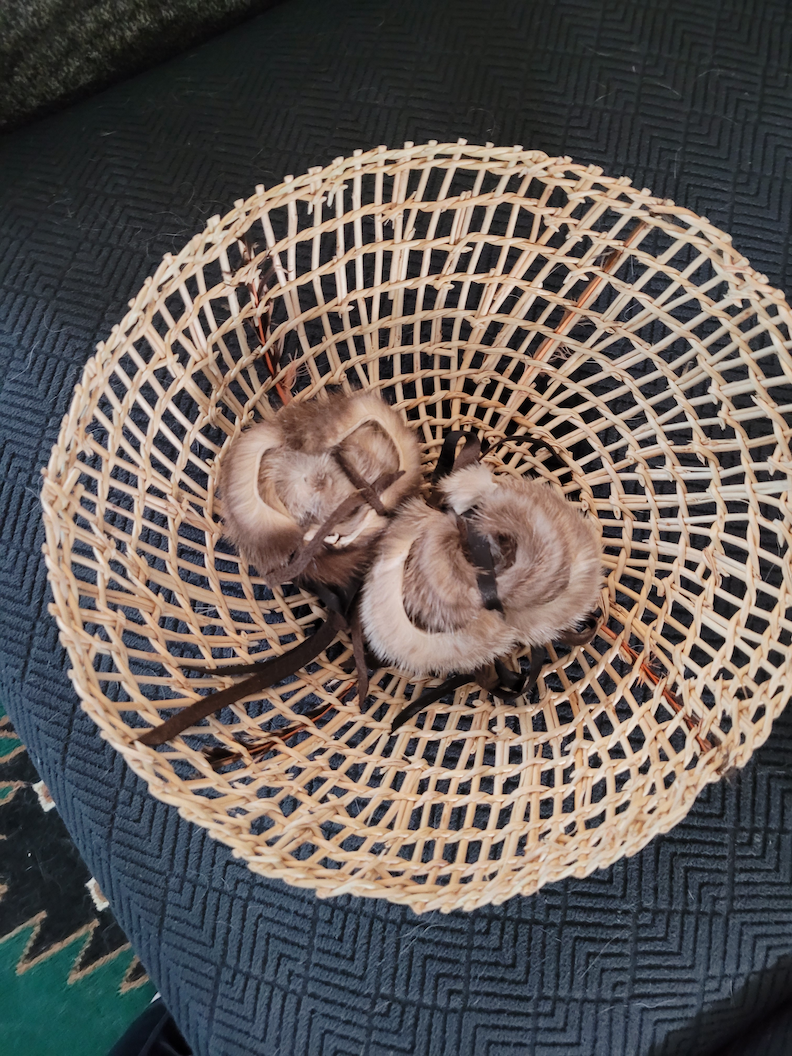Beth’Ann Gipson (Myrtle Creek) is a basketmaker, drummer, and member of the Cow Creek Band of Umpqua Tribe of Indians. She has been making baskets since 2012, when she and others had the opportunity to revitalize their sleeping traditions.
Bio
Beth’Ann Gipson is a basketmaker, drummer, and member of the Cow Creek Band of Umpqua Tribe of Indians. The granddaughter of Rose Augusta Deardorff and a member of the Rondeau family, Gipson grew up in Canyonville, OR during the last part of the 20th century. She recalls hearing stories about her elders fighting the government to have their treaty rights restored; people wanted to revitalize practices like dancing and powwows. Because the CCBUTI had been terminated in 1954, like so many other Indian Tribes in Oregon, their culture was disrupted, their heritage no longer accessible. Although the Cow Creek Band of Umpqua Tribe of Indians was finally restored in 1982, there were only a few traditional basket designs available to serve as models. To learn how to weave, Gipson and others looked to nearby indigenous peoples for assistance. Gipson was able to work with a variety of master basket weavers from the Karuk and Yurok Tribes, whose traditional lands in northern California and southern Oregon border those of the CCBUTI. Well-known master basket weavers Wilverna Reece, Alice Lincoln Cook, and Lena Herd were and are her mentors; she also studied with Dr. Margaret Matheson, who has been active in revitalizing Native basket making in western Oregon.
When Gipson first started weaving baskets in 2012, she remarks, “I honestly was hooked, and I don't know if it was just the basketry, but it was the people. It was the relations.” For her baskets, Gipson follows in the footsteps of her predecessors and gathers by hand a variety of materials: willow sticks, hazel sticks, willow root, spruce root, pine root, alder bark, cedar bark, Oregon grape root, beargrass, cedar, juncus, tule, maiden hair fern, and woodwardia fern. Her elders also taught her the proper seasons for gathering and how to process the fibers to ready them for weaving. Part of the challenge is to figure out when it’s time to harvest and not to take too much—just what one needs. Gipson explains, “you only take what you need, gather what you need, but never over.” It is part of her practice to give back to the land by offering the plants she takes tobacco in thanks.
Gipson’s first taught her to braid beargrass, then how to start a basket, to twine, open weave, dye fibers, and to triple weave to for the sides of a basket. She’s also made fish traps, which require a large, open weave out of hazel sticks and other materials; the traps have one end open and lined with spikes so that the fish or eels swim in and can’t get out. But baskets are not only valuable for gathering and trapping; their materials also have medicinal value. Gipson explained that they make baby rattles out of willow root, which contains natural aspirin and helps the babies when they're teething. Some of her favorite baskets to weave include those baby rattles as well as trinket, tobacco, and burden baskets.
Beth’Ann Gipson, a member of the California Indian Basketweavers Association (CIBA), is involved heavily in revitalization efforts for her Tribe, from drumming and singing to powwows to dance. In 2022, she received a Traditional Arts Recovery Program award from the Oregon Arts Commission to create new baskets in her Tribe’s tradition. Gipson is proud to be carrying on basketmaking traditions that are gradually making their way back into her community.




